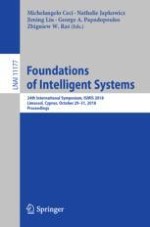This book constitutes the proceedings of the 24th International Symposium on Foundations of Intelligent Systems, ISMIS 2018, held in Limassol, Cyprus, in October 2018.
The 32 full, 8 short, and 4 application papers presented in this volume were carefully reviewed and selected from 59 submissions. The papers deal with topics such as bioinformatics and health informatics, graph mining, image analysis, intelligent systems, mining complex patterns, novelty detection and class imbalance, social data analysis, spatio-temporal analysis, and topic modeling and opinion mining. In addition, three special sessions were organized, namely: Special Session on Granular and Soft Clustering for Data Science, Special Session on Intelligent Methodologies for Traffic Data Analysis and Mining, and Special Session on Advanced Methods in Machine Learning for Modeling Complex Data.
